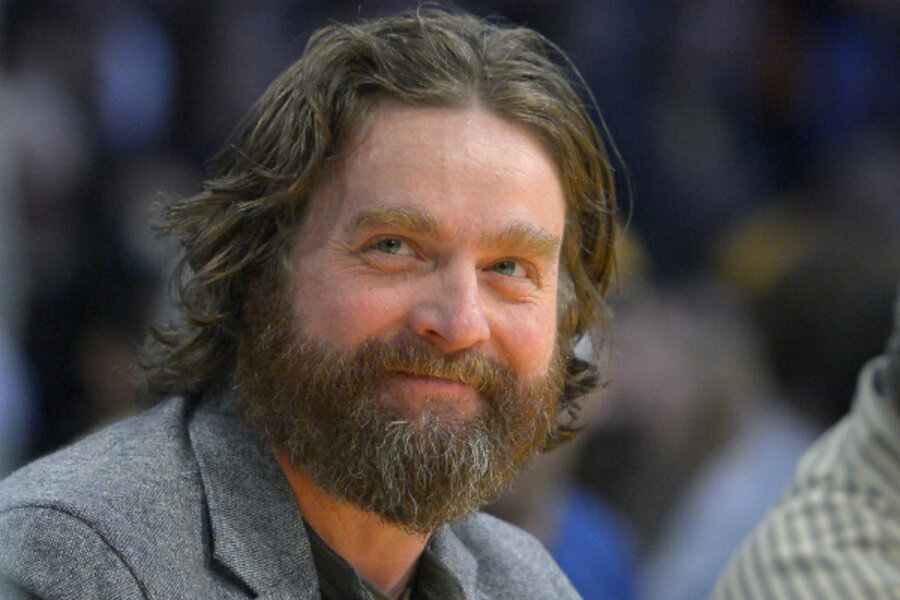President Obama on 'Funny or Die': Funny or dud?
Loading...
President Obama on Tuesday appeared in an episode of “Between Two Ferns," actor Zach Galifianakis’ satirical talk show on the “Funny or Die” web site. This was perhaps the boldest – or most outrageous – example yet of the White House attempt to market the Affordable Care Act to young people using nontraditional media.
The Pajama Boy ad for Obamacare? The use of the Doge Internet meme in a blast e-mail urging health insurance sign-ups? Those were perhaps conventional uses of media compared to this.
That’s because “Between Two Ferns” and Mr. Galifianakis are not “The Tonight Show” and Jimmy Fallon. On the show Galifianakis apes a bored, unprepared cable access host. With the president of the United States on, the actor made sure to establish this tone right away.
“Sorry I had to cancel a few times last week,” Galifianakis said. “My mouse pad broke. I had to get my great aunt some diabetes shoes.”
“No problem,” replied Obama. “When I heard that people actually watch this show, I was pretty surprised.”
Galifianakis went on to ask a series of “questions," such as what Obama has planned for follow-up after pardoning a turkey for 2013, and whether Hulk Hogan or Tonya Harding would be a better US envoy to Syria.
Obama replied in kind. They did a pretty good job of acting annoyed with each other. At least, we assume it was acting.
“What’s it like to be the last black president?” Galifianakis asked at one point.
“What’s it like for this to be the last time you ever talk to a president?” Obama shot back.
About half-way through the six-minute show, the president segued into Obamacare after the host sighed and asked what his (Obama’s) plug was.
Obama made the points the White House is trying to emphasized with young people – that health insurance costs less than their cell phone, and that they are not invincible in terms of health problems.
“Did you say ‘invisible?’ ” asked Galifianakis.
At the end, the set falls down, and it’s revealed that the show is being taped in the Diplomatic Room at the White House. Galifianakis says that’s where the show is always done.
“You’ve been filming here all these years, who gave you permission to do that?” asked Obama.
“Bush," says the “Hangover” movie star.
Will this accomplish White House goals? That will be easier to answer once final enrollment figures are in on March 31. If nothing else, the appearance shows how hard the administration is trying to attract the coveted young, healthier cohort of enrollees.
Some pundits enjoyed it.
“Best/Worst thing about #Obama’s schedule today is he’s already peaked,” tweeted veteran National Journal reporter Ron Fournier.
Others didn’t.
“I like esoteric comedy as much as the next guy, but this is effective outreach? POTUS has nothing better to do?” tweeted Mark Hemingway, senior writer at The Weekly Standard.
Maybe not, in terms of larger political outreach. The administration’s goal here could be selling the Democratic brand in general to young people as much as the Affordable Care Act in particular.
After all, the youngest voters of the Millennial generation do not lean Democratic, points out George Washington University political scientist John Sides, in “The Monkey Cage” blog. In the 2012 presidential election, Mitt Romney won among voters age 18 to 20.
The explanation for this is that the political allegiance of generations coming of voting age is determined by the economic and political fundamentals of that time. And the youngest voters cast their first ballot at a time when Obama’s overall approval rating is low.
“A booming economy and a popular president will push young people toward the president’s party. A recession and an unpopular president will push young people toward the opposite party,” writes Professor Sides.
In this context, the untraditional marketing methods for Obamacare make sense on several levels. They may boost enrollment – and they may win back some wavering voters before they become committed to the GOP.






